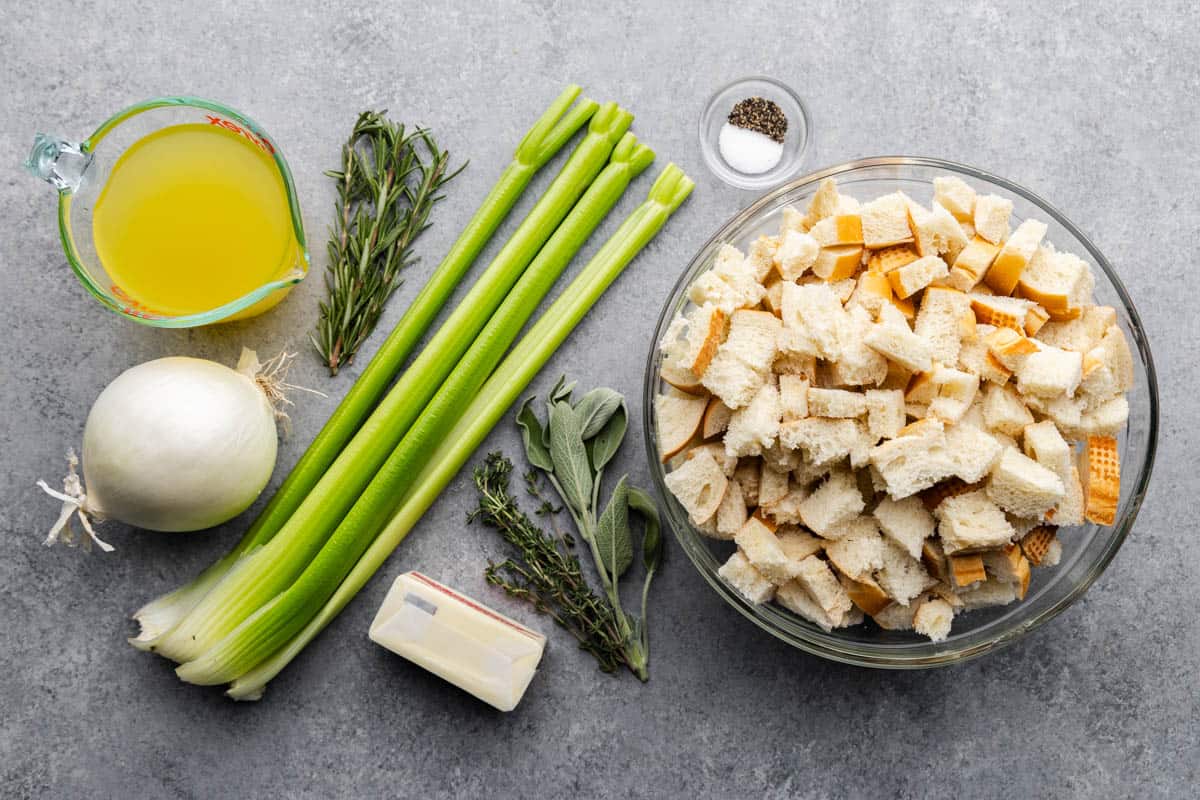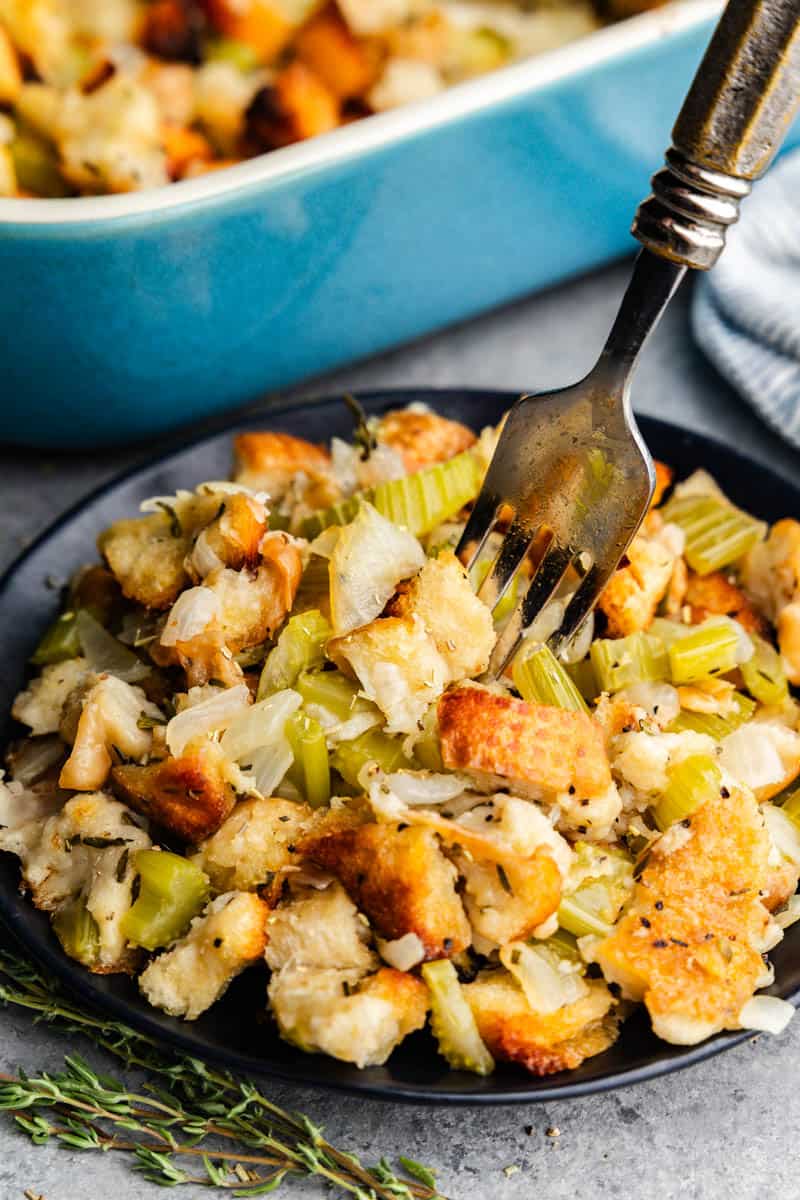If you’ve never made homemade stuffing before, you’re truly missing out! Homemade stuffing is surprisingly easy to make, requires just a handful of ingredients, and puts any boxed mix to shame. The result? The most delicious stuffing that’s moist, soft, and the ultimate holiday side dish (or a full meal—who are we to judge?).
Serve this up alongside our favorite juicy turkey or our simple oven-roasted turkey breast.
Why Our Recipe
- Stuffing that’s made completely from scratch yet still super easy to make.
- Uses the classic fresh herb combination of sage, rosemary, and thyme.
- Includes instructions to dry fresh bread, in case yours hasn’t gone stale yet.
Stuffing is best made with dry, stale bread, but don’t worry, we’ve got you covered with easy instructions for drying it out if yours is still fresh. This will keep your stuffing from being too soggy. You can make it again and again, and it’s sure to be devoured every time. Don’t just take our word for it—give it a try yourself, and you might never go back to boxed stuffing again!
Ingredient Notes

- Bread: You can use any bakery-style loaf. You want it to be dry and stale for best texture.
- Onion: You can use a white or yellow onion here. Dice it for texture, or mince it if you prefer your onion to be more blended.
- Celery: The recipe calls for 1 1/2 cups sliced celery which will be about 4 or 5 medium celery ribs.
- Chicken Broth: Use a reduced sodium option to have more control over the salt levels.
- Fresh Herbs: You can typically find these in the plastic cases in the refrigerated area of the produce section at your local store. You can also use dried herbs as a substitute. If using dried herbs, reduce the amount to 1 teaspoon each.
Bread Options
Dry and stale bread is best for this recipe. The best kinds of bread to use to make stuffing are crusty, bakery-style loaves. Options include French bread with a hard crust, a country-style loaf, or even sourdough bread. If your bread is not dry and stale, it’s a good idea to toast your bread before using it to make stuffing. To toast your bread, dice your bread into 1-inch cubes. Spread them out into a single layer on a baking sheet. Bake in a 225-degree oven for 30 minutes until stale.

Don’t Stuff a Turkey
While cooking stuffing inside a turkey might sound nostalgic and tempting, it actually comes with some technical concerns. For stuffing to be safe to eat, it needs to reach an internal temperature of 165°F, the same as your turkey. However, in order for the stuffing to reach that temperature, the surrounding turkey meat may need to be cooked to 180°F or higher. This results in overcooked, dry turkey, and nobody wants that!
Cooking stuffing separately ensures that it heats evenly and thoroughly with no food safety concerns. Plus, baking the stuffing in a dish keeps it moist yet lightly crisp on top, which is something you can’t achieve when it’s inside the bird.
Storage and Reheating Instructions
Refrigerate leftovers in an airtight container for up to 5 days.
Reheat portions in the microwave on high in 30-second increments until heated through.
More delicious holiday sides…
Trending Products

GE Electronic Window Air Conditioner 6000 BTU, Efficient Cooling for Smaller Areas Like Bedrooms and Guest Rooms, 6K BTU Window AC Unit with Easy Install Kit, White

Alen BreatheSmart Classic H13 HEPA Air Purifier, Air Purifiers For Home Large Room w/ 1100 SqFt Coverage, Medical-Grade Air Cleaner for Pet Dander & Odor, up to 12 Mos. Filter Life, Espresso

Luminance Midway Eco LED Ceiling Fan with Light and Remote | Dimmable 54 Inch Fixture with DC Motor | Contemporary 5 Blade Design with Downrod Mount for Hanging, Appliance White

Nostalgia RF6RRAQ Retro 6-Can Personal Cooling and Heating Mini Refrigerator with Carry Handle for Home Office, Car, Boat or Dorm Room-Includes AC/DC Power Cords,,1 cubic feet, Aqua











